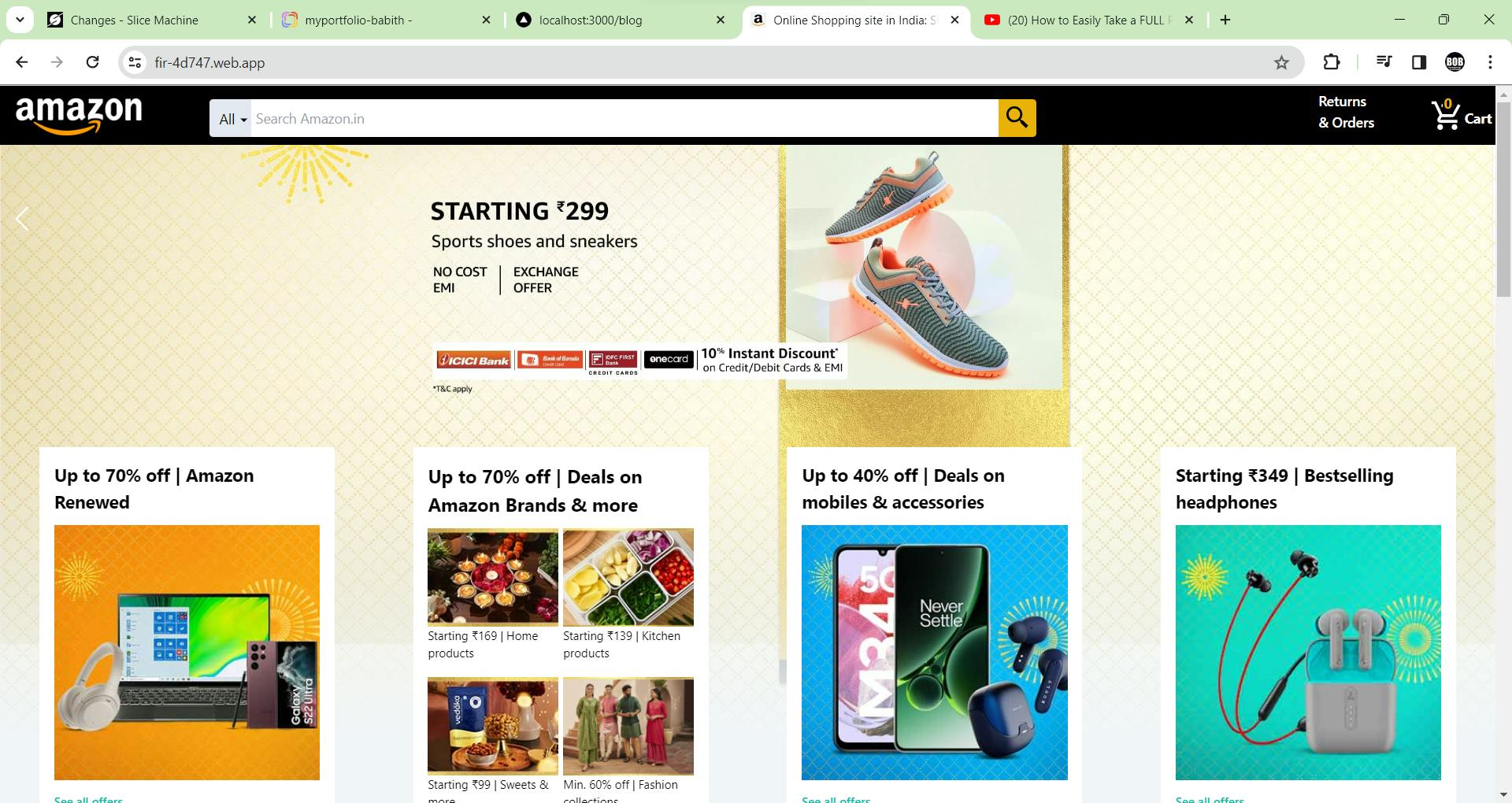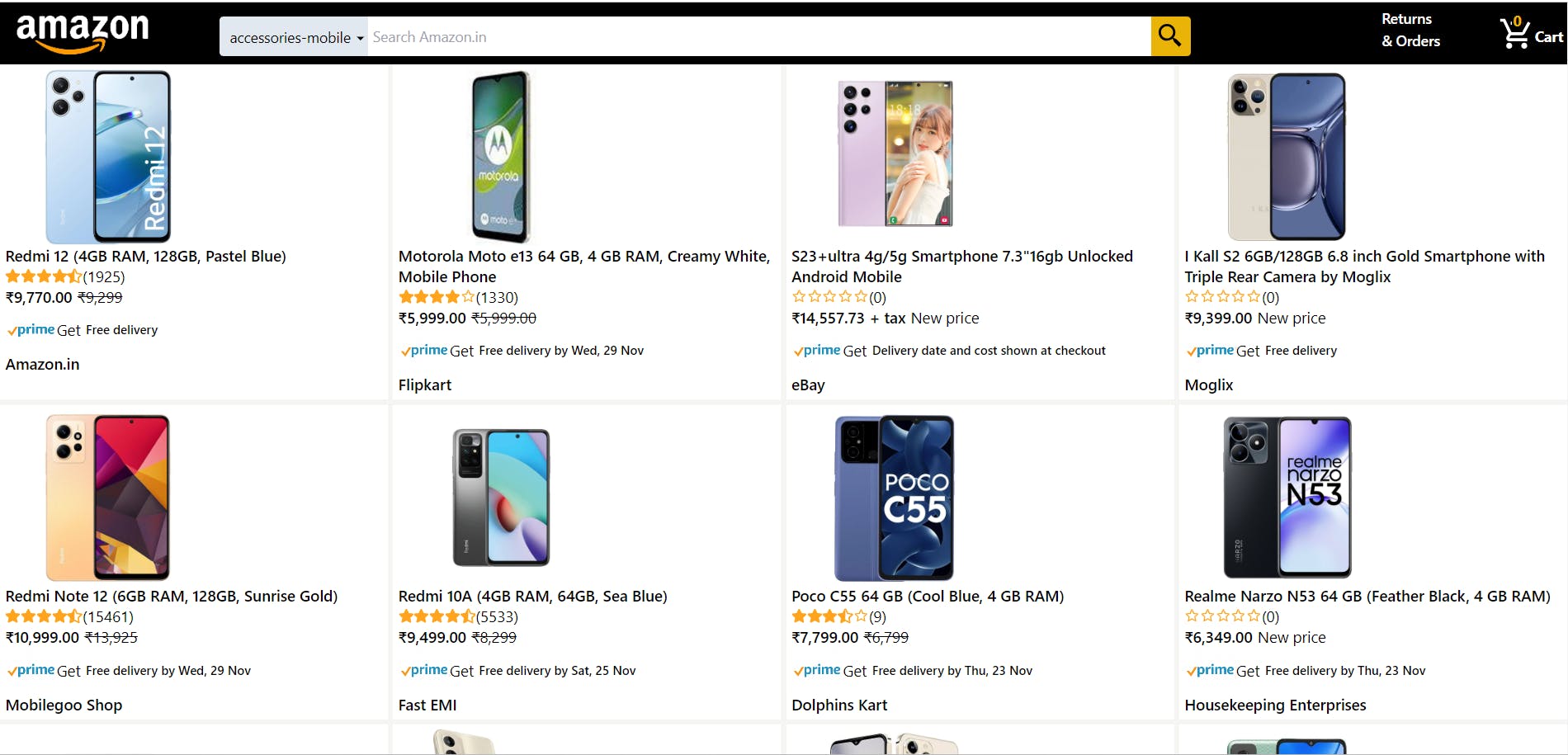Amazon Clone
Sunday, November 5, 2023
Title: Building an Amazon Clone with React and Firebase: A Journey into E-Commerce Development
Introduction:
In the vast landscape of web development, creating a full-fledged e-commerce platform from scratch is a challenging yet rewarding endeavor. Recently, I embarked on the exciting journey of building an Amazon clone using React for the frontend and Firebase for the database. In this blog post, I'll share my experiences, challenges faced, and the key lessons learned during the development process.
Choosing the Tech Stack:
Selecting the right technology stack is crucial for the success of any project. React, a popular JavaScript library for building user interfaces, provided a robust foundation for the frontend. Its component-based architecture and virtual DOM make it efficient for creating dynamic and responsive web applications.
For the backend, Firebase emerged as an excellent choice, offering a serverless infrastructure and real-time database capabilities. Firebase Authentication ensured secure user sign-ins, while Firestore, a NoSQL document database, served as the storage solution for product data, user information, and more.


Setting Up the Project:
Getting started with the project involved setting up the development environment, creating a new React app, and configuring Firebase services. Firebase's intuitive console made it easy to set up authentication, enabling secure user logins and registrations.
Building the Frontend:
React's component-based structure allowed for a modular and scalable approach to building the frontend. I created components for the header, product display, shopping cart, and more. React Router facilitated navigation between different pages, providing a seamless user experience.
Styling the application was made efficient with the use of CSS-in-JS libraries like Styled Components, allowing for dynamic styling based on component props.
Integrating Firebase:
Integrating Firebase into the project involved connecting the React app to the Firestore database. I used Firebase SDK to handle real-time updates, ensuring that the application displayed the latest product information without the need for manual refreshing.
Firebase Authentication seamlessly integrated with the frontend, enabling secure user authentication. This ensured that users could sign in, add products to their cart, and complete the checkout process securely.
Challenges Faced:
While the development process was mostly smooth, there were a few challenges that I encountered and overcame. Handling asynchronous operations, such as fetching data from Firestore, required careful use of Promises and async/await syntax. Additionally, managing the state of the shopping cart across different components posed a challenge, but React's Context API came to the rescue.
Key Takeaways:
1. Planning is Crucial: Before diving into coding, a well-thought-out plan and design can save a lot of time and prevent potential roadblocks.
2. Firebase is Powerful: Firebase's real-time database and authentication services significantly simplify the backend development process, allowing developers to focus more on the frontend.
3. React's Reusability: Leveraging React's component-based architecture makes it easier to create reusable and modular code, promoting maintainability.
4. Continuous Learning: The world of web development is ever-evolving, and embracing a mindset of continuous learning is essential. Staying updated on the latest technologies and best practices is crucial for building robust and scalable applications.
Conclusion:
Building an Amazon clone using React and Firebase was an enriching experience that deepened my understanding of web development. The project not only showcased the power of these technologies but also reinforced the importance of thoughtful planning and continuous learning in the ever-changing landscape of software development. As I continue to refine and expand upon this project, I look forward to exploring more advanced features and incorporating additional technologies to enhance the user experience.